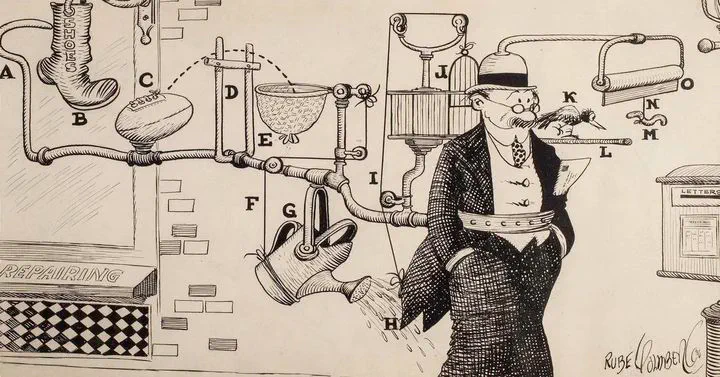Lean, UX, Clicking Buttons and Starting a Tesla
 TBA
TBAImmediately after WWII, Toyota, then a modest company in Japan, began manufacturing cars. Instead of emulating Ford’s established methods, Toyota engineered its own solution to a challenge already thought to be mastered. This innovation marked the advent of “lean” thinking—a philosophy that transcends manufacturing, influencing logistics, product development, and beyond.
At its core, lean manufacturing is anchored in the redefinition of waste: it’s about identifying and eliminating anything that does not add value for the customer. Toyota’s interpretation was transformative—work in progress, inventory parts, unnecessary movement, task-switching, and especially defects, are all forms of waste. It’s a concept that challenges the status quo, insisting that if an element does not contribute to the customer’s experience, it is extraneous.
Discerning Waste in User Experience

The infiltration of ‘waste’ into the user experience (UX) paradigm has prompted a reevaluation of how systems engage with users. Identifying and excising waste is not just an exercise in efficiency—it’s a redefinition of user interaction, with the aim of crafting a more lean experience.
To navigate the concept of waste in UX, we must dissect the notions of ’necessity’ and ‘value.’ Necessity is a system’s operational demand; value, in contrast, is the reward a user perceives from their interaction with the system. Consider the act of phone authentication: a user seeks access to sensitive information, but is met with a barrage of verification questions. This process, while necessary from a security standpoint, does not enhance the user’s experience—it does not add value.
The defense of such processes as ’necessary’ often lacks consideration of the user’s perspective. Validation, while crucial, need not be cumbersome. Modern technology affords us simpler, more elegant solutions, such as one-tap phone authorization or voice recognition—methods that marry security with ease, trimming the fat of cognitive burden.
Ultimately, the ideal is a seamless validation—automatic, unobtrusive, and minimal in its demand on the user. If not complete automation, then at least the path of least resistance: a prompt resolved by a fingerprint, a tap, or a glance, replacing outdated security questions with intuitive, user-centric authentication.
The Evolving Necessity
The concept of “necessary” is not static; it is contingent upon the prevailing circumstances of an era. This fluidity often leads to the transformation of a once critical necessity into a redundant waste. The real pivot in innovation, then, is not just enhancing efficiency within existing constraints but redefining the constraints themselves.
Consider the historical necessity of physical travel for message delivery. Up until two centuries ago, a message’s journey of a hundred miles was a true necessity—whether by foot, horse, or avian carrier. But with the advent of the telegraph and subsequent telecommunications breakthroughs, the paradigm shifted. What was once a necessity became obsolete, supplanted by the new necessity of electromagnetic waves.
This evolution underscores a timeless axiom: if a user’s action does not elicit a direct response or perceivable benefit, then from the user’s standpoint, it is non-value-adding. Necessary it may be for the system, yet if it remains outside the user’s appreciation, it is tantamount to waste.
Translating this to a familiar setting: dining at a restaurant. The elements that enrich our experience—the cuisine, service, ambiance—these are the creators of value. Conversely, the backstage orchestrations—food procurement, preparation, kitchen hygiene, storage logistics, order management—while essential to the end-product, remain unseen and unvalued by the diner.
The principle carries over to our daily commutes. The journey to a place of study or work does not, in itself, create value. It is a precondition to value creation. The aspiration, therefore, is to minimize this “necessary” non-value-adding activity, whether through telecommuting advancements, reducing travel needs, or transforming travel time into productive periods via activities such as writing on public transit or educational audio consumption during a drive.
The Illusion of Interaction: How Not To Press Buttons
The challenge of identifying and eliminating waste is not always as clear-cut as one might hope. In the realm of gaming, particularly within RPGs, the mechanics of interaction with non-playable characters (NPCs) provides a nuanced example. The oft-repeated action of clicking to advance dialogue can quickly feel like a chore rather than a choice, turning what should be engaging into tedium. The repetitive nature of the task diminishes its value, resulting in a dissonance between effort and reward.
The reluctance to streamline this process stems from two concerns. Game designers worry that automating dialogue might cause players to overlook vital information, either from disinterest or slow reading. Additionally, they equate constant clicking with higher engagement, fearing that its absence may lead to a loss of player involvement.
However, these objections fail to hold up under scrutiny. The pace of dialogue does not guarantee its consumption—disinterested players will gloss over text regardless. Moreover, conflating physical interaction with genuine engagement is a misconception; engagement is not merely a physical act but a mental state.
Pivoting to elearning, the currency here is engagement, yet it should not be mistaken for mere page-turning. While dynamic visuals may attract attention, they don’t guarantee cognitive involvement. Elearning leverages interactivity by offering learners a semblance of control over their educational journey. It transcends traditional pedagogy by providing a choice in the order of topic exploration. Although all topics may eventually need to be covered, the freedom to navigate through them at will grants the learner autonomy, transforming the learning environment from a passive to an active experience.
Within this context, button-clicking transcends the label of mere necessity; it becomes a means of imparting value. It’s a deliberate design choice that acknowledges the learner’s agency and reinforces the significance of their decisions. It’s a nod to the user’s capacity to impose order on the chaos, to find relevance in what might otherwise be a linear and prescriptive learning path.
Streamlining the Drive: Tesla’s Lean Approach
Embracing the lean philosophy, Tesla has reimagined the driving experience by scrutinizing every step for potential waste elimination. Let’s compare the traditional process with Tesla’s innovation.
Historically, to operate a car, one would follow this sequence:
- Unlock the car
- Open the door
- Sit down
- Press the brake
- Start the engine
- Shift into gear
- Accelerate
Analyzing this chain through the lens of value creation reveals which steps actually enhance the driver’s experience. Opening the door provides clear value by bridging the driver to the car’s interior. Yet, the prior action of unlocking is simply a means to an end—always preceding door opening but not adding independent value.
Combining unlocking with door opening streamlines the entry process. Tesla achieves this by automatically unlocking the doors as one attempts to open them, thus merging two steps into one seamless action.
Sitting down is a natural continuation of opening the door, a physically necessary step to operate the vehicle. However, pressing the brake, traditionally a safety measure, doesn’t contribute to the driving experience—until Tesla redefined it. The ‘Easy Entry’ feature transforms this act into a value-adding one. By pressing the brake, the car not only prepares for ignition but also adjusts to the driver’s preferred seating and steering wheel position, signaling readiness to drive.
In traditional vehicles, the start-stop routine—igniting the engine with a key turn or button press, and the reverse when parking—is an obligatory dance that drivers perform without deriving any real value from it. These actions, born from mechanical necessity, interrupt the fluidity of the driving experience with a task that feels as dated as dial-up internet in a high-speed world. It’s a vestige of an age when cars needed manual commands to awaken and rest. This process, while necessary, does nothing to enrich the journey, it merely allows it to begin or end. Contrast this with the modern laptop, which springs to life upon opening and slips into sleep when closed, creating an expectation for immediacy that Tesla has ingeniously transferred to the automotive realm. By eliminating the archaic ignition sequence, Tesla not only streamlines the action of starting a car but also elevates the entire driving experience to one of seamless readiness and departure, mirroring the effortless immediacy we now demand from our technology.
Conclusion
In the quest for efficiency, the principle of lean manufacturing has traversed from the factory floors of Toyota to the broader horizons of various industries, revealing everywhere an immense potential for refinement and improvement. At its core, lean thinking challenges us to scrutinize every action, every process, for its value—demanding we differentiate the necessary from the valuable, the wasteful from the worthwhile.
From the repetitive button-pressing in RPGs to the ritualistic start-up sequences of our vehicles, we’ve seen how wastes remain ubiquitous in our modern life. A tremendous effort is needed in order to redefine ’necessity’ can transform user experience, turning mundane interactions into opportunities for delight and efficiency.
In a world where user experience can make or break products and services, the lean approach is no longer optional; it is imperative. It’s a philosophy that demands continuous innovation, not just in product design but in every aspect of our interaction with the world around us. It asks us to look beyond what is done to understand what ought to be done, to see not just the task but the purpose, the not just the action but the meaning behind it.
Let us embrace lean, where each simplification is a step towards a future of seamless and intentional living, a world where every action is impactful, every process meaningful..